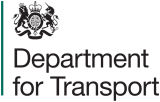

Why NTT DATA Business Solutions?
- NTT DATA Business Solutions understood our business and our industry.
- Knowledgeable consultants with data science and advanced analytics expertise.
- A positive experience from working with NTT DATA Business Solutions on earlier BI Consulting activities. This helped Howdens to leveage their existing investment in data and analytics, placing them in an ideal position to benefit from advanced analytics.
We turned to AI and Machine Learning to optimise production with change over and stoppage analysis in addition to predicting customer buyer behaviour. This exciting project has already provided invaluable business insights.
Trevor Cowan, Group BI Systems Manager, Howden Joinery Group PLC
Number of Employees: 8,000 (2020)
UK Turnover: £1.52b (2020)
Howdens was established in 1995 to provide trade customers with kitchens, joinery, and hardware products, which are available from local stock at depots across the UK, France, and Belgium. Starting with just 14 depots, there are now more than 750 locations supporting the trade achieve exceptional results for their customers. As a British manufacturer, we were founded on the principle that the business should be worthwhile for all concerned. That includes our customers, the homeowners they serve, the local communities we operate in, local and national charities, our large network of suppliers, our investors, and of course our people. Our commitment to these areas has led to many accolades, which include being voted in the Top 25 Best Big Companies to work for by the Sunday Times in 2020. We also hold a Royal Warrant by Appointment to Her Majesty the Queen to supply goods and services to Royal Households since 2015. And in 2020, the Mintel group named us as the UK’s number one supplier of trade kitchens.
Challenges and Benefits
Challenges
- The requirement to optimise the manufacturing process by minimising unplanned stoppages and reducing changeover times on assembly lines
- The opportunity to understand customer buying behaviour in greater depth and gain an effective measure of customer loyalty
- The need to optimise stock holding at depots with a greater understanding of order completion and identification of orders that are likely to be cancelled
- A desire to transition from conventional analytics to advanced analytics
Benefits
- New and invaluable insights were delivered that targeted production optimisation and customer service:
- On production optimisation, the telemetry generated by the manufacturing operations were coupled with enterprise data to highlight opportunities to optimise the sequence and timing of manufacturing plans to improve productivity and minimise production downtime.
- On customer service, the use of classification models and clustering techniques provided a mechanism to identify customer segments and their unique requirements. This has provided a detailed understanding into customer loyalty and the factors that improve customer retention.
Solutions
- Machine Learning outcomes were underpinned by the SAP Business Technology Platform.

With Howdens already using SAP technologies and a mature analytics estate in place, an opportunity arose for the organisation to explore how advanced and predictive analytics could be used to solve business challenges.
Optimising Data-Driven Decisions and Delivering Actionable Results.
Howdens is the UK’s number one trade kitchen supplier providing thousands of products across kitchens, joinery and hardware. With more than 750 depots throughout the UK and Europe, Howdens are the first choice for more than 470,000 loyal trade professionals.
With Howdens already using SAP technologies and a mature analytics estate in place, an opportunity arose for the organisation to explore how advanced and predictive analytics could be used to solve business challenges. Turning to their SAP Analytics Consulting Partner, NTT DATA Business Solutions, the project quickly gained momentum when Howdens were introduced to the NTT DATA Business Solutions predictive analytics and data science team. A Proof of Concept (PoC) was initiated to explore the potential of advanced analytical techniques in specific areas of the business. Howdens were able to quickly access their highly curated and historical datasets that were hosted in their SAP Data Warehousing system and introduce Machine Learning (ML) algorithms to deliver new and invaluable insights. Five use-cases were summarised into two categories – manufacturing optimisation and customer buying behaviour:
Manufacturing Optimisation / Stoppage Analysis
Howdens assembly lines were examined to understand and predict unplanned stoppages. Historical data was harvested from telemetry generated from the manufacturing operation and ML algorithms were applied to build a predictive model that analysed the characteristics of historical stoppages. The analysis highlighted the specific, individual components on the bill of materials that caused the greatest outages. Another influence on stoppages was identified as the amount of Total Preventive Maintenance (TPM) stoppages carried out the previous day.
Manufacturing Optimisation / Change Over
Howdens wanted to explore the impact of each kitchen line recalibration in order to minimise changeover delays. The ML algorithms reviewed and learned the product sequencing in order to present the optimal production run scheduling.
Customer Buying Behaviour / Customer Loyalty
Howdens adopted ML to gain greater insight into customer retention factors and predict future loyalty. The model looked at new customer behaviour within four weeks of their first purchase to determine the influencing factors for repeat sales using the historical data. The analysis provided compelling insight with predicted customer loyalty trends and presented opportunities to improve the potential for repeat business.
Customer Buying Behaviour / Customer Segmentation
Howdens wished to gain detailed insight into their types of customers and the impact on future productivity and revenue. The characteristics of customers were added to a cluster model that looked at customer type, spend, frequency and product mix. Predictive models were then set up to identify ‚“what if scenarios” that could be used to inform future marketing strategies to appeal to the unique customer characteristics of each cluster as well as understanding the impact on manufacturing.
Customer Buying Behaviour / Sales Order Prediction
With the Howdens business model focused on trade customers and accounts set up to standard payment terms, occasionally orders are placed but cancelled before invoicing. Howdens turned to ML to predict the likelihood of an order being cancelled based on historical completed and cancelled orders. The insight allowed Howdens to identify order patterns and the findings will be invaluable for reducing future storage costs and prioritising stock for certain depots to ensure the effective distribution of popular product lines. A recommendation for phase two was to include stock levels to gain further granularity into surplus stock.
The PoC used ML modelling capabilities with the SAP Business Technology Platform for the pipelining (and predictive) data layer. The results of the five PoC‘s have been fascinating with two projects currently prioritised to move from development to a full production project. ‘Stoppage Analysis‘ and ‘Change Over‘ are the initial focus with Howdens excited to explore other areas where advanced analytics can deliver deeper data knowledge and drive powerful business outcomes.
Similar posts


We now have far better performance from our BI platform with enhanced dashboard reporting and we have scaled up to more than 3,000 users.


The Department for Transport uses one solution, leveraging SAP BPC to support reporting and SAP BPC is regarded as a business critical MI system.


it.mx customer portal's comprehensive range of functions brings direct benefits, allowing customers to easily process and manage orders, and book in and manage their goods. It makes the process of monitoring, analysing and overseeing stock levels simple, with the ability to produce regular KPIs.